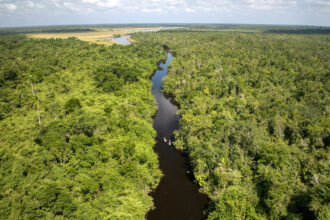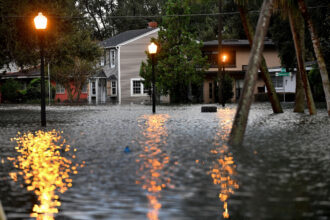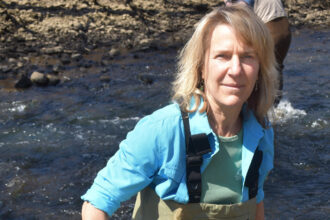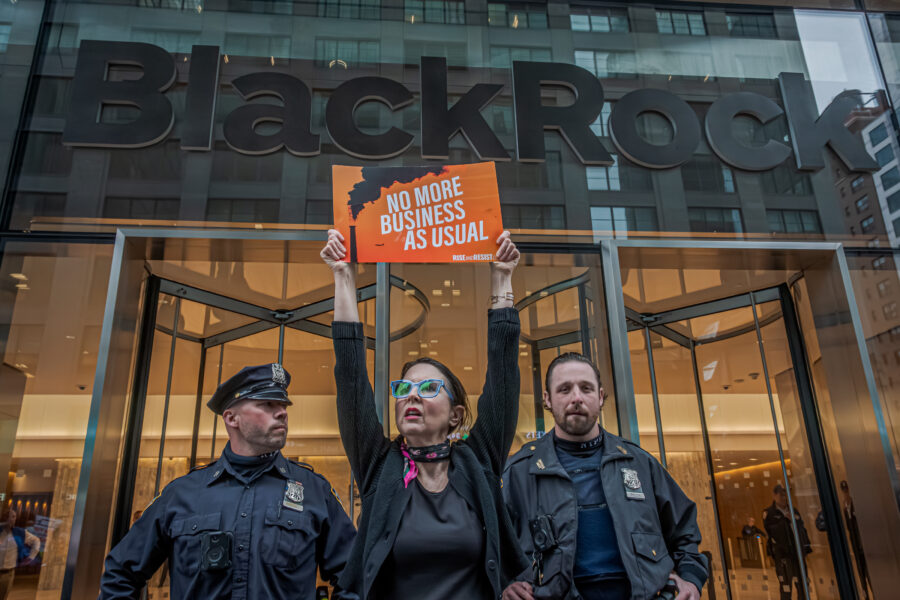The ocean is quite literally a massive sink for carbon. Research shows that this body of water has absorbed more than a quarter of all carbon dioxide pollution that humans have pumped into the sky, helping to prevent more catastrophic impacts from climate change than the ones humanity is already experiencing.
However, scientists have found that even the ocean is reaching its limit, and could become only half as efficient at sucking in carbon by 2300 due to extreme warming and acidification. But a growing number of startups, including Captura and Running Tide, have pledged to help lighten the ocean’s carbon load by using technology to suck the greenhouse gas directly from seawater.
In one of the biggest efforts yet, carbon removal company Equatic and Singapore’s national water agency PUB announced on Wednesday that they have set out to build the world’s largest ocean-based carbon removal plant. Last year, the company—owned and run by scientists from the University of California, Los Angeles—developed two proof-of-concept pilots in LA and Singapore, which successfully extracted around 100 kilograms (0.1 tons) of carbon dioxide each day.
Now, their goal is to develop a $20 million plant that removes 3,650 metric tons (4,000 tons) of the gas from the ocean annually, according to a UCLA press release.
How does it work? In the “Equatic process,” operators start by running an electrical current through seawater pumped into the facility. This charge separates water (H2O) into hydrogen and oxygen, then air is passed through the water, which traps and stores CO2 in solid calcium and magnesium-based materials “similar to how seashells are naturally formed,” reported Time Magazine, which named Equatic as one of the “Best Inventions of 2023.” Removing carbon from the water enables the ocean to absorb more carbon from the air, the company says. In addition to storing CO2, the company plans to use the hydrogen byproduct as an ingredient in clean fuel, according to the statement. Other companies have been testing different processes to suck carbon from seawater, which my colleague Ananya Chetia wrote about last year.
But does it work? Technically yes, but the scalability of this seemingly magical process of sucking carbon from the air or sea has been met with widespread skepticism by scientists. More than 200 experts signed a letter in September outlining their concerns:
“While ocean-based carbon dioxide removal approaches have enormous potential, there are also risks,” they wrote. “Society does not yet have nearly enough information about the effectiveness or impacts of any specific approach and so cannot make informed decisions about their use at scale.”
Last May, a U.N. panel called the carbon capture industry “unproven,” with “unknown” risks, and questioned its economic viability due to high operating costs. But the U.S. federal government is certainly making big bets on research that will help enhance the ocean’s ability to remove carbon from the atmosphere. In October, the Department of Energy (DOE) allocated $36 million in funding to “advance marine carbon dioxide removal techniques” (Equatic is not part of this initiative, but has received funding from the DOE). The National Science Foundation took the first steps toward launching a federal research program to investigate different techniques such as using “minerals and electricity to change the alkalinity of the oceans to allow seawater to absorb more CO2 from the air,” E&E News covered.
Many experts agree that carbon capture is going to be necessary to meet climate goals. The new Equatic plant is a “significant part of Singapore’s goal to reach net zero emissions by 2045,” writes Koh Ewe for Time. If the plant meets its expected output, the company plans to scale up at a commercial level, and has already entered agreements with other businesses, including Boeing, to purchase carbon credits—a practice that has also faced its fair share of controversy, as my colleagues have explored several times in the past.
More Top Climate News
It sometimes seems like a new anxiety-inducing headline pops up each week revealing the sheer quantity of chemicals found in food and drinking water. However, this week saw two tentatively positive bits of news for consumers surrounding microplastics and “forever chemicals” known as PFAS.
Boiling and phasing out: In recent years, microplastics have been found in the furthest reaches of the world—from snow in the remote Arctic to the clouds of Mount Fuji. These tiny bits of plastic are especially common in tap water, research shows. However, a new study published Wednesday reveals that the surprising low-tech solution to removing microplastics from this liquid is boiling it.
During their experiment, researchers created simulated versions of tap water—which is normally loaded with minerals and plastic particles—and found that boiling it for five minutes and running the liquid through a filter reduced nano- and microplastic exposure by up to 90 percent. Like me, you may be wondering where all the plastic is going: When the mineral calcium carbonate becomes solid at high enough temperatures, it traps the plastic particles, and can be strained out through a coffee filter, according to the study.
“What’s important to note here is that the effectiveness of trapping these micro/nano plastics in these mineral solids is tied to how hard [mineral-rich] the water is – the harder the water, the more solids are formed, the more microplastics are trapped,” Anja Brandon, the associate director of U.S. plastics policy at the Ocean Conservancy and an environmental engineer who was not involved in the study, told Healthline.
Though the study’s authors cautioned that there must be further research before recommending this practice at scale, there’s no harm in giving it a shot. The scientists told the Washington Post that individuals should wait 5 to 10 minutes after boiling to let the solids settle and water cool then filter it, which undoubtedly adds a decent chunk of time to fetching a glass before bed.
Also at the chemical-food intersection, the FDA announced on Wednesday that grease-proof food wrappers being sold in the U.S. will no longer be made with PFAS—a class of chemicals that don’t break down for long periods of time. Though scientists are still learning about the health risks associated with “forever chemicals,” PFAS have been linked to immune system issues, developmental delays and breast cancer, which my colleague Liza Gross reported on in January.
An FDA spokesperson told the Hill that it could take 18 months for companies to run through their existing inventory of food wrappers, but Jim Jones, the FDA’s deputy commissioner for human foods, marked the step overall as a public health “win.”
Meanwhile, Texas is currently battling the largest fire in the state’s history, which has killed at least two people and burned through more than 1 million acres of land, CNN reported. A deadly combination of high temperatures, low relative humidity and strong winds fueled the blaze—conditions that are becoming more common as climate change accelerates, report Christopher Flavelle and Delger Erdenesanaa for the New York Times. Experts forecasted a blaze like this years ago, and officials say the inferno is likely to continue to spread.













